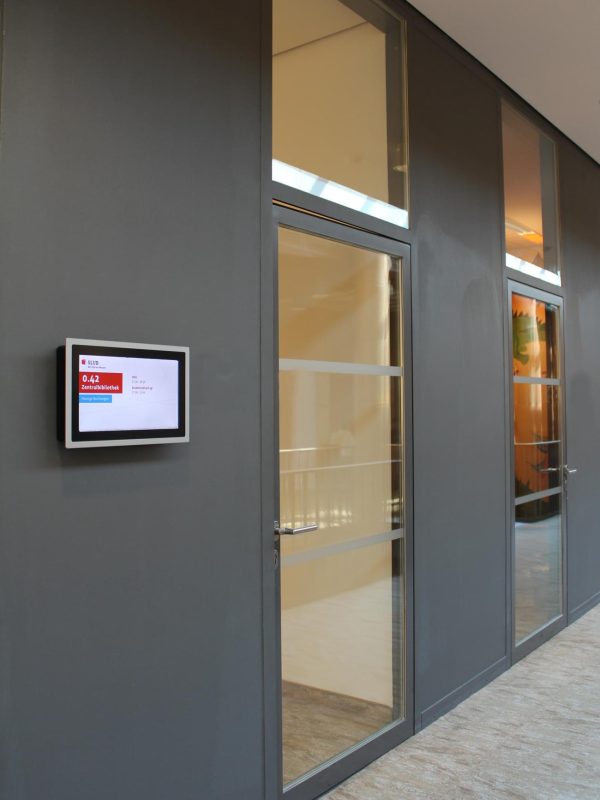Digital kiosk systems and digital displays – what’s the difference?

Safety aspect
The stable housing of a kiosk system can also be equipped with a security lock to prevent unauthorised access to the inside of the device. To protect the screen, a shock and impact resistant protective glass pane is installed. In contrast, digital screens lack all-round protection, which makes them much more susceptible to security problems and damage – and this has an impact on the service life.
Functionality
Digital displays have only one purpose: to display digital content. Kiosk systems, on the other hand, can contain other components such as barcode scanners or printers. The biggest advantage is the interactivity that a digital signage device can offer. With the help of touch gestures or movements in front of a proximity sensor, content can be played out in a more intelligent way. The more senses are activated, the more pleasant and comprehensible the content is perceived by users. Another advantage is the independent location. Digital signage steles can be used both indoors and outdoors without any problems.
Safety aspect
The stable housing of a kiosk system can also be equipped with a security lock to prevent unauthorised access to the inside of the device. To protect the screen, a shock and impact resistant protective glass pane is installed. In contrast, digital screens lack all-round protection, which makes them much more susceptible to security problems and damage – and this has an impact on the service life.
Functionality
Digital displays have only one purpose: to display digital content. Kiosk systems, on the other hand, can contain other components such as barcode scanners or printers. The biggest advantage is the interactivity that a digital signage device can offer. With the help of touch gestures or movements in front of a proximity sensor, content can be played out in a more intelligent way. The more senses are activated, the more pleasant and comprehensible the content is perceived by users. Another advantage is the independent location. Digital signage steles can be used both indoors and outdoors without any problems.

Conclusion
In contrast to conventional displays, digital signage is more versatile, safer and more durable. The high degree of individualisation of design and equipment is another important unique selling point of Digital Signage.
In times in which digital technologies are increasingly used in day-to-day business, it is important to uncover differences and misunderstandings surrounding the topic of digital signage.
Conclusion
In contrast to conventional displays, digital signage is more versatile, safer and more durable. The high degree of individualisation of design and equipment is another important unique selling point of Digital Signage.
In times in which digital technologies are increasingly used in day-to-day business, it is important to uncover differences and misunderstandings surrounding the topic of digital signage.